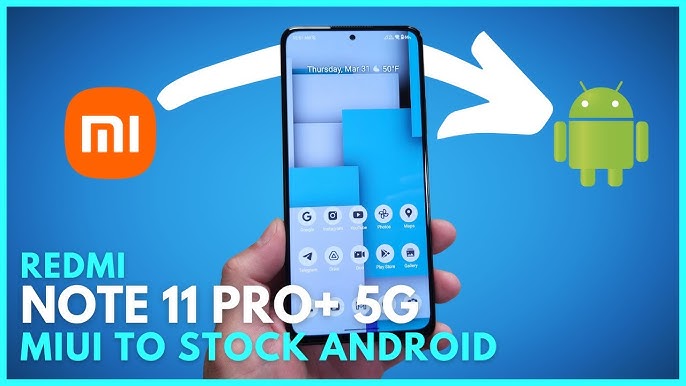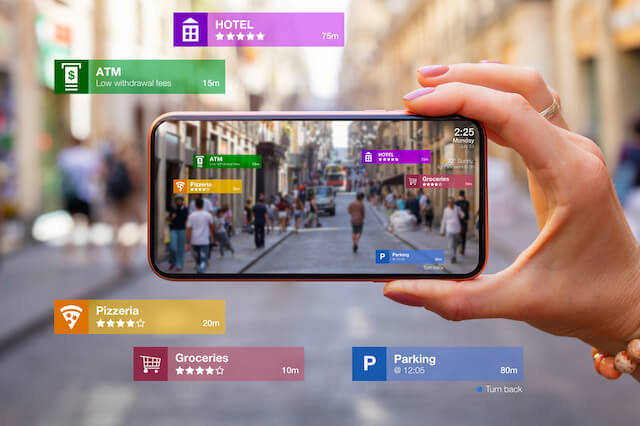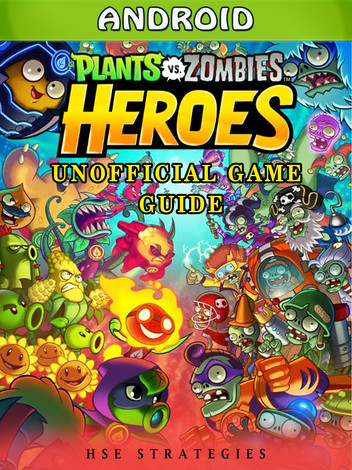
5G on Android: More Than Speed, It’s the Next Smartphone Revolution
For the past few years, “5G” has been the ultimate buzzword in the world of Android phones. Every new flagship, and now even many budget devices, proudly displays the 5G logo on its box. Carriers plaster cities with ads promising lightning-fast downloads. But for many users, the promise of 5G has felt a bit abstract. Is it just about downloading a Netflix movie a few seconds faster? The answer is a resounding no. 5G is not just an incremental update like 3G was to 2G; it’s a foundational shift in mobile technology that is fundamentally changing what our Android gadgets can do. It’s the invisible engine powering the next wave of innovation in mobile gaming, augmented reality, and the interconnected world of the Internet of Things (IoT). This article will move beyond the marketing hype to explore what 5G truly means for your Android experience today and what it promises for the very near future. We’ll dive into the different “flavors” of 5G, how they impact your daily usage, and how this technology is shaping the very apps and gadgets we use every day.
Beyond Speed: Deconstructing the Three Pillars of 5G on Your Android Phone
When we hear “5G,” our minds immediately jump to speed. While that’s a huge part of the story, it’s only one-third of the equation. The true power of 5G lies in three distinct pillars, each designed to enable a different kind of technological revolution, with your Android phone sitting right at the center.
eMBB (Enhanced Mobile Broadband): The Speed You Know, Supercharged
This is the 5G feature that gets all the headlines. Enhanced Mobile Broadband is all about raw data throughput. We’re talking about peak download speeds that can theoretically surpass 10 Gbps, which is faster than most home fiber optic connections. In the real world, this translates to a dramatically smoother experience for data-hungry tasks. For an Android phone user, this means:
- Instant Downloads: Downloading a full-length 4K movie in seconds, not minutes. Grabbing a massive game like Genshin Impact over a mobile network without having to hunt for Wi-Fi.
- Flawless Streaming: Streaming 4K or even 8K video content from services like YouTube and Netflix without a hint of buffering, even in a crowded area.
- Cloud Gaming Unleashed: Services like Xbox Cloud Gaming and NVIDIA GeForce NOW become truly viable on the go. With eMBB, your phone can stream AAA console-quality games with high-fidelity graphics and minimal compression, turning your Android device into a portable gaming powerhouse.
URLLC (Ultra-Reliable Low-Latency Communication): The Gift of Instant Response
Perhaps the most transformative aspect of 5G is its incredibly low latency. Latency is the delay between when you send a signal and when it’s received. 4G latency is typically around 30-50 milliseconds; 5G aims to get that down to under 5 milliseconds, and in some cases, as low as 1ms. This near-instantaneous response time is critical for applications where every millisecond counts. On your Android phone, this unlocks:
- Competitive Mobile Gaming: For fast-paced online games like Call of Duty: Mobile, low latency means the difference between victory and defeat. Your actions are registered on the server almost instantly, giving you a competitive edge.
- Truly Immersive AR: Augmented Reality apps, like Google Maps’ Live View, become smoother and more realistic. With URLLC, digital objects can be “pinned” to the real world with perfect stability, making interactive AR experiences feel seamless and natural.
- The Future of Connectivity: This is the technology that will enable self-driving cars to communicate with each other and with city infrastructure in real-time, and your Android phone will be your interface to this connected world.
mMTC (Massive Machine-Type Communications): Connecting Everything
The final pillar, mMTC, isn’t about speed or responsiveness for a single device, but about the ability to connect a huge number of devices simultaneously within a small area. 5G can support up to one million connected devices per square kilometer. While you don’t own a million devices, this capability is the backbone of the Internet of Things (IoT). Your 5G Android phone becomes the command center for a smart world. Think about a smart city where your phone communicates with traffic lights, parking meters, public transit, and smart home gadgets—all at once, without network congestion. This massive connectivity ensures that as our world fills with smart Android gadgets, from watches and fitness trackers to home sensors and appliances, the network will be able to handle it all effortlessly.
The 5G Spectrum Showdown: What mmWave, Sub-6, and C-Band Mean for You
Not all 5G is created equal. You may have seen terms like “5G UW,” “5G+,” or “Nationwide 5G” in carrier advertising. These refer to the different radio frequency bands that 5G operates on, and the type you’re connected to has a massive impact on your experience. Understanding the difference is key to choosing the right Android phone and setting realistic expectations.
mmWave (Millimeter Wave): The Blazing-Fast Sprinter
Think of mmWave as a laser-focused spotlight. It uses very high frequencies (typically 24 GHz and above) to deliver mind-blowing, multi-gigabit speeds. This is the 5G that carriers love to show off in speed tests. However, like a spotlight, its beam is narrow and doesn’t travel far. High-frequency signals are easily blocked by walls, trees, and even your own hand. Therefore, mmWave is primarily deployed in dense, high-traffic areas like sports stadiums, concert venues, airports, and specific downtown city blocks. Many flagship Android phones sold in the US, like the Google Pixel series and Samsung’s Galaxy S Ultra line, include special mmWave antennas to access these networks.
- Best For: Users in dense urban cores or frequent visitors to venues where it’s deployed.
- Pitfall: Coverage is extremely limited. Step around a corner, and you could lose the signal entirely.
Sub-6 GHz: The Reliable Workhorse
If mmWave is a spotlight, Sub-6 is a broad, powerful floodlight. It operates on mid-band and low-band frequencies (below 6 GHz), which are much better at traveling long distances and penetrating obstacles. While not as astronomically fast as mmWave, Sub-6 5G is still significantly faster and more responsive than 4G LTE. This is the backbone of “Nationwide 5G” coverage for most carriers around the world. It provides the best balance of speed and coverage, making it the most important type of 5G for the vast majority of users. Almost every 5G Android phone on the market supports Sub-6.
- Best For: Virtually everyone. It provides a meaningful upgrade over 4G in most suburban and urban areas.
- C-Band’s Role: A specific slice of the Sub-6 spectrum, known as C-Band, is the “goldilocks” frequency. It offers a fantastic middle ground, delivering speeds that are a major leap over lower-band 5G while still having good coverage. Recent Android news has been full of carrier announcements about their expanding C-Band networks.
How Your Android Phone Manages It All
Your Android phone is smart. It features a setting, often called “Adaptive Connectivity,” that intelligently manages these network connections. To conserve battery, it might use 4G for background tasks but instantly switch to the fastest available 5G band the moment you start streaming a video or downloading a large file. This seamless handoff ensures you get performance when you need it and battery life when you don’t.
The Ripple Effect: How 5G is Reshaping the Android Ecosystem
The true impact of a new technology isn’t just in the technology itself, but in how it enables new applications, devices, and behaviors. 5G is the catalyst for a major evolution across the entire landscape of Android phones and Android gadgets.

A New Golden Age for Android Apps and Gaming
The combination of high bandwidth and low latency is a dream come true for developers. We are already seeing a new class of apps emerge that simply weren’t possible on 4G.
- Case Study: Cloud Gaming on the Go. A user with a Samsung Galaxy S23 Ultra and a 5G connection can clip on a controller like the Razer Kishi and play Cyberpunk 2077 via GeForce NOW with graphics settings maxed out, while sitting on a park bench. The game is running on a powerful server hundreds of miles away, but the low latency of 5G makes the input lag nearly imperceptible. This untethers high-end gaming from the living room console.
- Hyper-Realistic AR: Imagine pointing your Pixel phone at a historic building and seeing a photorealistic AR overlay of how it looked in the 19th century, with animated people and vehicles moving around it. 5G allows for the massive amount of data required for these complex, cloud-rendered AR experiences to be streamed to your device in real-time.
Powering the Next Generation of Android Gadgets
5G’s ability to provide a persistent, high-speed connection allows for the creation of “thinner” gadgets that offload their processing power to the cloud. This means devices can be smaller, lighter, and have longer battery life.
- True AR Glasses: The dream of lightweight, all-day wearable AR glasses is closer than ever. Instead of needing a bulky onboard processor, these glasses can tether to your 5G Android phone in your pocket, using its connection to stream all the visual data from the cloud.
- Smarter, More Independent Wearables: A 5G-enabled smartwatch, like a Samsung Galaxy Watch 5 Pro LTE, can become a truly standalone device. It can stream high-quality music, handle video calls, and receive complex, interactive notifications without needing to be connected to your phone via Bluetooth, giving you more freedom.
A Practical Guide: Is a 5G Android Phone Worth It for You?
With the technology now mature and networks expanding rapidly, the question is no longer *if* 5G is the future, but whether you need it *today*. Here are some practical considerations.

The “Do I Need It?” Checklist
Ask yourself these questions to gauge if you’ll see a real benefit from upgrading:
- Check Your Coverage: Before anything else, check your carrier’s 5G coverage map. If you don’t live, work, or travel in a 5G area, a 5G phone won’t provide any immediate benefit.
- Analyze Your Usage: Are you a heavy data user? Do you frequently stream 4K video, play online games, or download large files on the go? If so, 5G will be a noticeable quality-of-life improvement.
- Are You Future-Proofing? If you plan to keep your new Android phone for three or more years, buying a 5G model is a wise investment. The networks and 5G-enabled apps will only become more prevalent during that time.
Best Practices: Balancing Battery Life and Performance
One of the early complaints about 5G was its impact on battery life. While modems have become much more efficient, it can still use more power than 4G. Here are some tips:
- Use Adaptive Connectivity: Keep this feature enabled in your phone’s network settings. It’s the single best way to balance performance and battery life automatically.
- Know When to Turn It Off: If you’re in an area with a spotty 5G signal, your phone might waste battery constantly searching for and switching to a weak 5G connection. In these fringe areas, manually setting your phone to “4G/LTE Preferred” can save significant power.
- Choose Efficient Hardware: Newer chipsets, like Qualcomm’s Snapdragon 8 Gen 2 and beyond, feature highly integrated and efficient 5G modems that have a much smaller impact on battery than first-generation hardware.
Conclusion: Your Android Phone is Now a Portal to the Future
5G on Android has officially moved from a futuristic promise to a practical reality. It is far more than just a higher number on a speed test; it’s a comprehensive technological leap forward. It’s the high-octane fuel for enhanced mobile broadband, the near-instantaneous nerve system for ultra-reliable low-latency communication, and the vast, robust web for a world of massively connected devices. For users of Android phones, this translates into tangible benefits today—smoother streaming, truly competitive cloud gaming, and more responsive apps. More importantly, it lays the groundwork for the next generation of Android gadgets and experiences that we are only just beginning to imagine. As networks continue to expand and developers harness its full potential, the 5G connection in your pocket is solidifying your Android phone’s role as the central, indispensable hub of your digital life.



